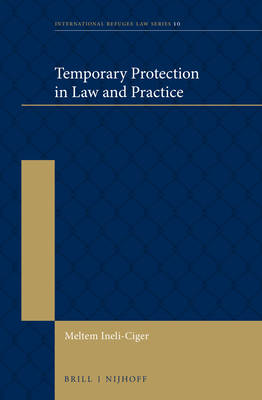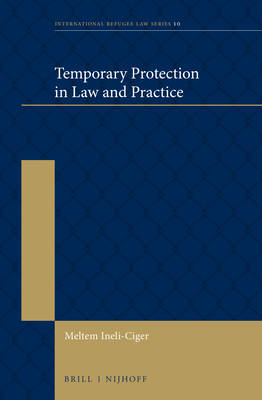
- Afhalen na 1 uur in een winkel met voorraad
- Gratis thuislevering in België vanaf € 30
- Ruim aanbod met 7 miljoen producten
- Afhalen na 1 uur in een winkel met voorraad
- Gratis thuislevering in België vanaf € 30
- Ruim aanbod met 7 miljoen producten
Zoeken
Omschrijving
Temporary protection is a flexible tool of international protection, which offers sanctuary to those fleeing humanitarian crises, and currently affects the lives and legal status of millions of forced migrants. However, the content, boundaries and legal foundation of temporary protection, remain largely undefined or unsettled. There are only a few instruments that provide guidance to states on how to respond to mass influx situations and how to implement temporary protection regimes. In Temporary Protection in Law and Practice, Meltem Ineli-Ciger takes a step towards clarifying those undefined aspects of temporary protection, by examining temporary protection's legal foundation in international law and its relationship with the Refugee Convention. The book also reviews temporary protection policies in Europe, Southeast Asia, Turkey and the United States, with a view to identifying elements that enhance and compromise the legality and viability of temporary protection regimes. Building on this analysis and legal limitations to the freedom of states to conceptualize different aspects of temporary protection, this book provides guidance to states on how to introduce and implement a viable temporary protection regime, which operates within the boundaries of international law and international human rights law.
Specificaties
Betrokkenen
- Auteur(s):
- Uitgeverij:
Inhoud
- Aantal bladzijden:
- 300
- Taal:
- Engels
- Reeks:
- Reeksnummer:
- nr. 10
Eigenschappen
- Productcode (EAN):
- 9789004327528
- Verschijningsdatum:
- 1/12/2017
- Uitvoering:
- Hardcover
- Formaat:
- Genaaid
- Afmetingen:
- 157 mm x 241 mm
- Gewicht:
- 589 g

Alleen bij Standaard Boekhandel
+ 549 punten op je klantenkaart van Standaard Boekhandel
Beoordelingen
We publiceren alleen reviews die voldoen aan de voorwaarden voor reviews. Bekijk onze voorwaarden voor reviews.








